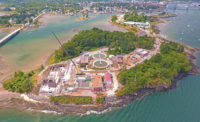The Oklahoma City Water Utilities Trust in early April approved $653 million in capital funding toward improving the city's water and wastewater systems over the next five years. The plan, which will be financed through rate increases, includes $488 million in spending for water-delivery and water-treatment projects, with the remaining funding allocated for wastewater collection and treatment upgrades.
On the water side, the main drivers for initiating capital improvements include growth issues, ensuring that customers have adequate pressure and flow, and improving system strength and recovery during emergencies or failures, says Sam Samandi, engineering manager with the Oklahoma City Utilities Dept.
Water system improvements will center on the design and construction of a 100-mile, 60-in.-dia water pipeline to supplement an existing pipeline of equal size and length, extending from the Atoka Reservoir in southeast Oklahoma to Oklahoma City's Draper Lake.
"The need for raw water has expanded in central Oklahoma," says Pete White, chairman of the Oklahoma City Water Utilities Trust. "The second Atoka pipeline would effectively double our capacity for bringing water from southeast Oklahoma to Oklahoma City."
Additional projects include expanding water treatment plants, replacing residential water lines and building more capacity for water storage.
"Last year's drought was an important indicator of the need for updated infrastructure and reliable sources of water," Samandi notes. "Demand was unusually high … resulting in a larger-than-normal number of water- main breaks. The plan addresses this by allocating money toward replacing pipes … that are corroded and cannot sustain higher pressure."
Planned wastewater improvements—resulting from a consent order with the Oklahoma City Dept. of Environmental Quality—have $164.5 million earmarked to enhance the capacity of wastewater treatment plants and collection systems, including upgrades to lift stations and pumps and adding more relief mains.



Post a comment to this article
Report Abusive Comment